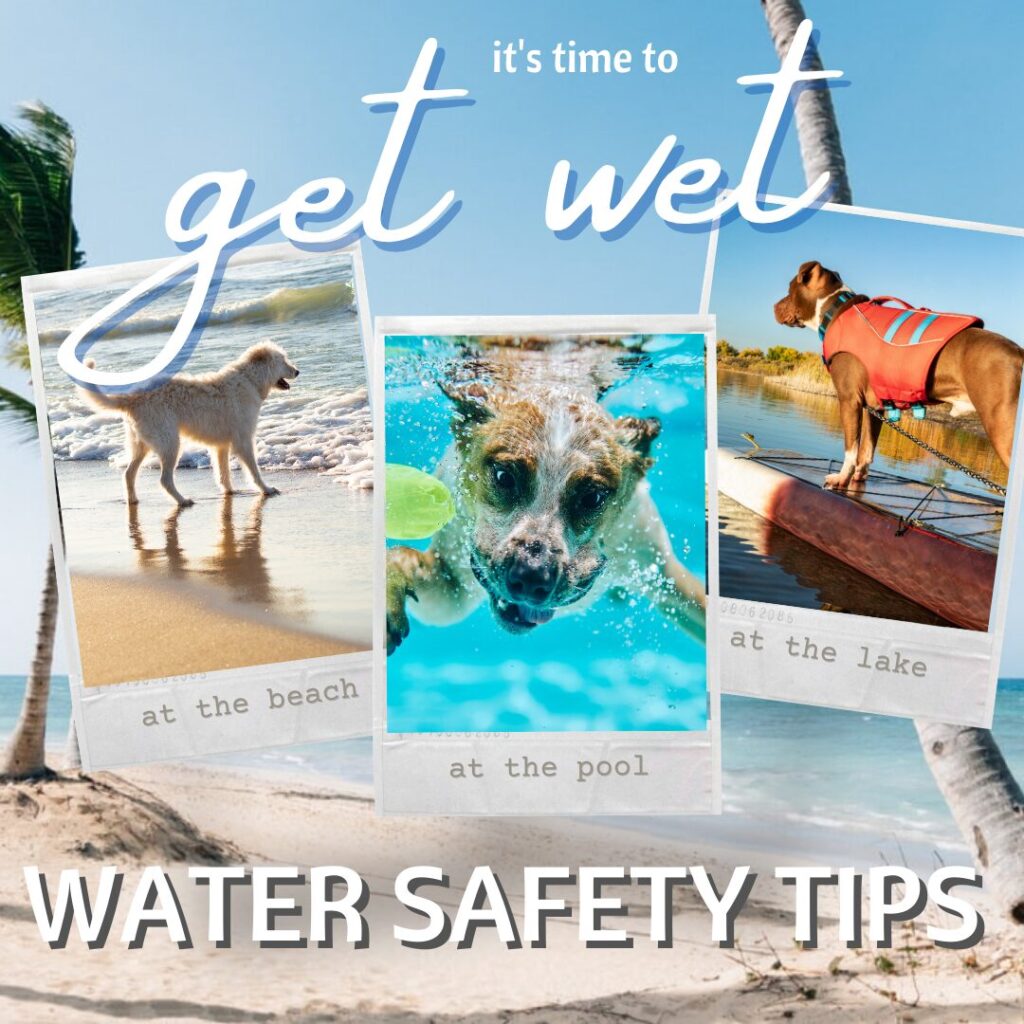I love to go paddleboarding and wish Carl would like to go with me, but he does NOT like water. I’ve never seen a dog go so fast in reverse as when I took him to doggy beach. He was curious, but as soon as he realized the ocean was made of water, forget it! He is always friendly with other dogs, but he wouldn’t even say hello to a wet dog! So, I’m envious to those whose fur friends like water. If that’s you (LUCKY!) here are some important safety tips (courtesy of MedVet) to keep in mind.
SUNSCREEN
Hairless and thinner haired pets need protection from the sun. There are special sunscreens for them – do not share yours!
GETTING STARTED
- Pick a shallow spot to start out and stay at the edge of the water. Allow them to play by chasing a ball or toy in shallow water.
- Don’t force them in. Throwing a pet in the water who doesn’t want to swim can be traumatic for them and keep them from wanting to get in the water again.
- Get in the water with them. When they start paddling with their front paws, lift their hind end so they understand how to float.
- Keep them on a leash at first so they can’t stray too far away from you.
- Make sure the water temperature isn’t too cold. Pets can get hypothermia just like you. If it’s too cold for you to be comfortable in the water, it’s probably too cold for your pet, too.
SAFETY
Invest in a properly fitting life jacket that will not only look adorable but could save your pet’s life. I like the ones with a handle on top to easily grab your pet out of the water. It’s also important to remember to give rests so they don’t overexert themselves and keep them close in case they need assistance. There are online videos and courses for first aid and CPR. After being in the water, keep an eye to make sure they haven’t accidentally inhaled water. Symptoms to look for are lethargy, coughing or hacking, and difficulty breathing.
DON’T DRINK THE WATER! Always ensure you have fresh water for your pet to drink.
Chlorine and salt water are obvious, but bacteria, parasites and algae may be present in fresh water. Check for algae blooms. Red tides and blue-green algae are especially dangerous.
BACKYARD POOLS
If you have a pool, make sure to have a fence or pool alarm. Make sure there are steps or a ramp to get out and practice using them with your pet. Pets can get trapped under pool covers, so make sure it is completely secure or removed. Pool toys are enticing, and can be chewed and ingested, so monitor closely. All pool chemicals should be stored safely.
WATCH YOUR SURROUNDINGS IN NATURE
Fish (including jellyfish) or other creatures that have washed up onto the shore may look like a tasty treat to your dog but could contain bacteria or other parasites as well as the potential to sting or bite. You’ll also want to keep an eye out for broken shells that could be cutting hazards.
Rip currents can occur in any large body of water with breaking waves.
Fishing areas pose several threats, such as getting tangled in fishing line, eating bait, or accidentally finding a fishhook.
AFTER YOUR DAY OF WATER FUN
Rinse your pet to remove any pool chemicals, salt water, sand, etc. Be sure to dry their ears to avoid potential ear infections.
It’s a little windy for paddleboarding today, but I’m ready for a bike ride and dip in the ocean after all this talk about being in the water! Hopefully I’ll see some dogs having fun at the beach, even though it won’t be Carl. Carl is best suited for parades and social events that are far away from water! He looks great with a tie, Hawaiian shirt or sweater!

